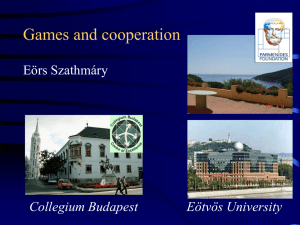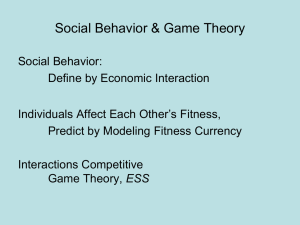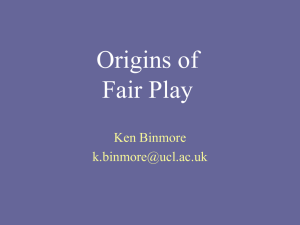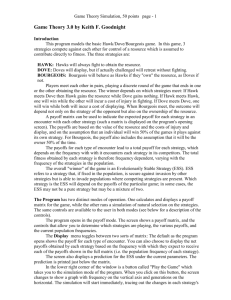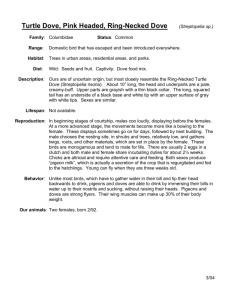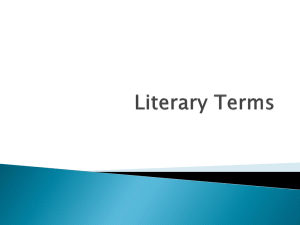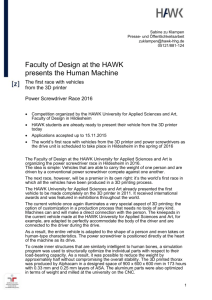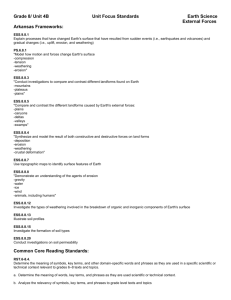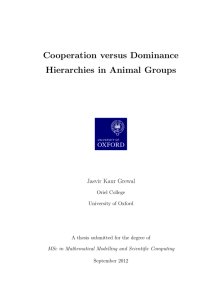During the previous lecture we began thinking about Game Theory
advertisement
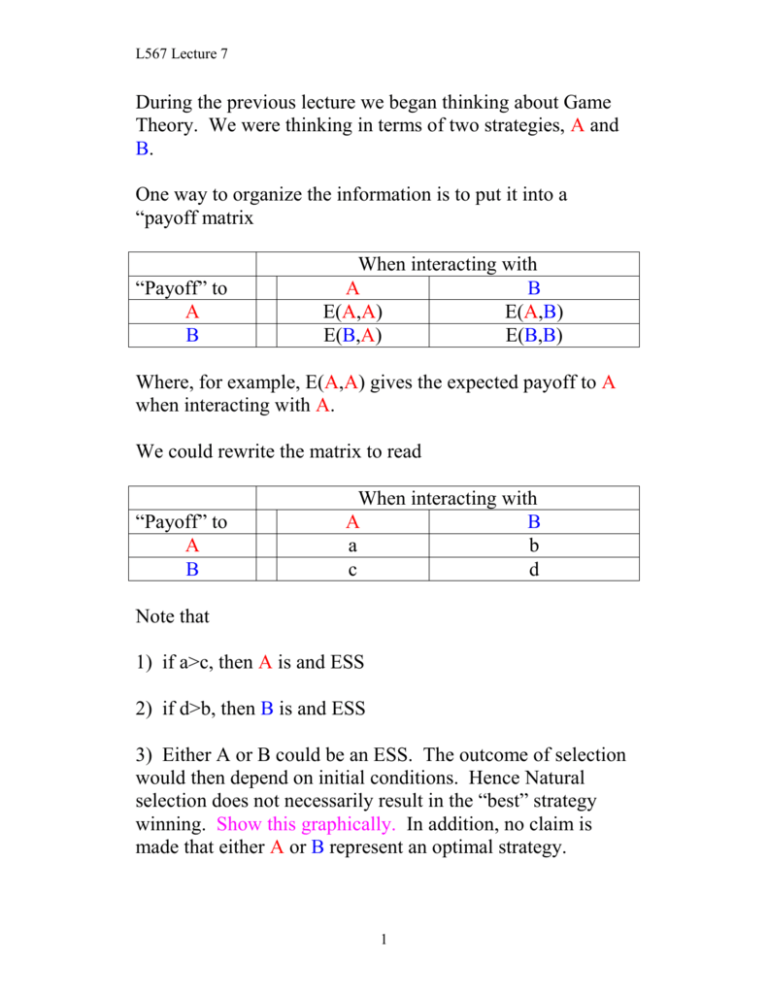
L567 Lecture 7 During the previous lecture we began thinking about Game Theory. We were thinking in terms of two strategies, A and B. One way to organize the information is to put it into a “payoff matrix “Payoff” to A B When interacting with A B E(A,A) E(A,B) E(B,A) E(B,B) Where, for example, E(A,A) gives the expected payoff to A when interacting with A. We could rewrite the matrix to read “Payoff” to A B When interacting with A B a b c d Note that 1) if a>c, then A is and ESS 2) if d>b, then B is and ESS 3) Either A or B could be an ESS. The outcome of selection would then depend on initial conditions. Hence Natural selection does not necessarily result in the “best” strategy winning. Show this graphically. In addition, no claim is made that either A or B represent an optimal strategy. 1 L567 Lecture 7 4) if neither A nor B is an ESS, then selection is frequencydependent. Both strategies will increase when rare under the action of natural selection, leading to a stable polymorphism. Since by definition, there is no Evol. Stable Strategy, we call this an Evolutionarily Stable State. It is a state of the population that is stable. We would like to know the frequency of A at the stable equilibrium point. How do we solve for that? Let q be the frequency of strategy A. Then 1-q is the frequency of strategy B. In the space below, show how you would solve for q at equilibrium, q̂ . Hint at equilibrium, the fitness of strategy A must be equal to the fitness of strategy B. 2 L567 Lecture 7 Now consider a “mixed” strategy such that a single individual could play either A or B. Let the name of the mixed strategy be I. Strategy I: play A with probability q and play B with probability (1-q) The Bishop-Cannings theorem: If I is an ESS, then at the ESS, the following is true E(A, I) = E(B, I) = E(I, I). Why is that true?* In addition, if I is an ESS, then E(I, A) > E(A, A), and E(I, B) > E(B, B). (i.e., Maynard Smith’s condition in equation 2.4b is met. Why is this true? What does it mean?? *Hint: write out E(I, A) > E(A, A). Compare to previous page 3 L567 Lecture 7 Some definitions. Strategy: specification of what an organism will do in a given situation. Pure strategy: conditional (e.g. Bourgeois) or unconditional (e.g. Hawk) fixed response. Mixed strategy: stochastic strategy (e.g., play Hawk with probability q and Dove with probability 1-q. THE HAWK-DOVE GAME We assume that two individuals pair up at random in a large population. Hawks will always fight for the contested resource. Doves will retreat from Hawks, and split the resource with other doves. Let V = the Value of the resource. We assume V>0. Let C = the Cost of fighting Here is the payoff matrix “Payoff” to Hawk Dove When interacting with Hawk Dove E(H,H) E(H, D) E(D,H) E(D, D) “Payoff” to Hawk Dove When interacting with Hawk Dove (V-C)/2 V 0 V/2 4 L567 Lecture 7 Okay, now answer the following questions: 1. When is Hawk and ESS? 2. When is Dove an ESS? 3. When would the population be polymorphic at equilibrium? What would be the frequency of hawks at equilibrium? 4. When would a mixed strategy be favored by selection. What would be the probability that an individual plays Hawk in this mixed strategy at equilibrium? Now consider a new strategy, Bourgeois. Bourgeois behaves like a hawk if it is the owner of the territory (e.g. sunspot), and it behaves like a dove, if it is the intruder on the territory. To get the simplest payoff matrix, we assume that Bourgeois is a territory owner one half of the time. “Payoff” to Hawk Dove Bourgeois Hawk (V-C)/2 0 (V-C)/4 When interacting with Dove Bourgeois 0.5[((V C) / 2) V ] V V/2 V/4 3 V/2 V 4 Convince yourself that the new gray entries are correct. Then show that Bourgeois is the only ESS if C>V. Finally, How does the Bourgeois strategy fit in with the findings in the Davies paper on the speckled wood butterflies. What was the definitive test of “play hawk if owner”? 5
